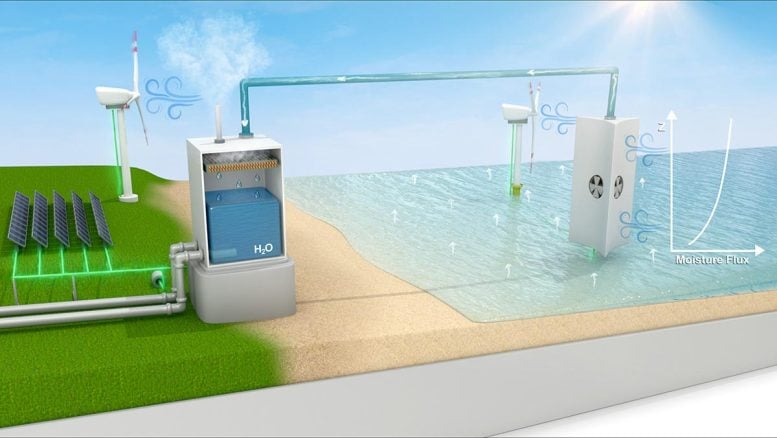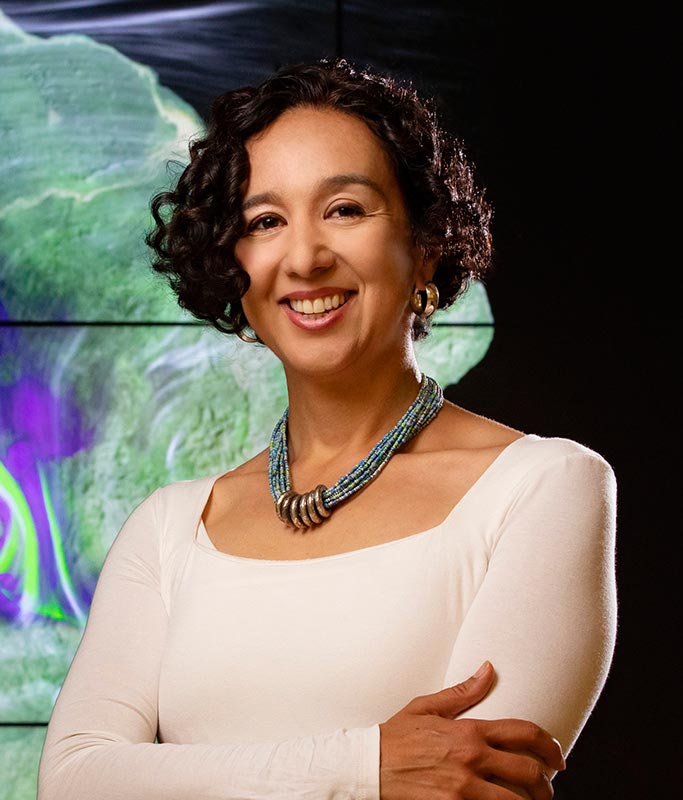
An almost limitless supply of fresh water exists in the form of water vapor above Earth’s oceans, yet remains untapped, according to researchers. A new study from the University of Illinois Urbana-Champaign (UIUC) is the first to suggest an investment in new infrastructure capable of harvesting oceanic water vapor as a solution to limited supplies of fresh water in various locations around the world.
The study evaluated 14 water-stressed locations across the globe for the feasibility of a hypothetical structure capable of capturing water vapor from above the ocean and condensing it into fresh water – and doing so in a manner that will remain feasible in the face of continued climate change.
Kumar, graduate student Afeefa Rahman and atmospheric sciences professor Francina Dominguez published their findings today (December 6) in the Nature journal Scientific Reports. The study was led by Praveen Kumar, professor of civil and environmental engineering and executive director of the Prairie Research Institute.

“Water scarcity is a global problem and hits close to home here in the U.S. regarding the sinking water levels in the Colorado River basin, which affects the whole Western U.S.,” Kumar said. “However, in subtropical regions, like the Western U.S., nearby oceans are continuously evaporating water because there is enough solar radiation due to the very little cloud coverage throughout the year.”
Previous wastewater recycling, cloud seeding, and desalination techniques have met only limited success, the researchers said. Though deployed in some areas across the globe, desalination plants face sustainability issues because of the brine and heavy metal-laden wastewater produced – so much so that California has recently rejected measures to add new desalination plants.

“Eventually, we will need to find a way to increase the supply of freshwater as conservation and recycled water from existing sources, albeit essential, will not be sufficient to meet human needs. We think our newly proposed method can do that at large scales,” Kumar said.
The researchers performed atmospheric and economic analyses of the placement of hypothetical offshore structures 210 meters in width and 100 meters in height.
Through their analyses, the researchers concluded that capturing moisture over ocean surfaces is feasible for many water-stressed regions worldwide. The estimated water yield of the proposed structures could provide fresh water for large population centers in the subtropics.
One of the more robust projections of climate change is that dry regions will get drier, and wet areas will get wetter. “The current regions experiencing water scarcity will likely be even drier in the future, exacerbating the problem,” Dominguez said. “And unfortunately, people continue moving to water-limited areas, like the Southwestern U.S.”
However, this projection of increasingly arid conditions favors the new ocean vapor-harvesting technology.
“The climate projections show that the oceanic vapor flux will only increase over time, providing even more fresh water supply,” Rahman said. “So, the idea we are proposing will be feasible under climate change. This provides a much-needed and effective approach for adaptation to climate change, particularly to vulnerable populations living in arid and semi-arid regions of the world.”
The researchers said one of the more elegant features of this proposed solution is that it works like the natural water cycle.
“The difference is that we can guide where the evaporated water from the ocean goes,” Dominguez said. “When Praveen approached me with this idea, we both wondered why nobody had thought about it before because it seemed like such an obvious solution. But it hasn’t been done before, and I think it is because researchers are so focused on land-based solutions – but our study shows other options do, in fact, exist.”
The researchers said this study opens the door for novel infrastructure investments that can effectively address the increasing global scarcity of fresh water.
Reference: “Increasing freshwater supply to sustainably address global water security at scale” by Afeefa Rahman, Praveen Kumar and Francina Dominguez, 6 December 2022, Scientific Reports.
DOI: 10.1038/s41598-022-24314-2
The University of Illinois Urbana-Champaign, the Lovell Professorship in the department of civil and environmental engineering, The University Scholar Program and the National Science Foundation supported this research.
17 Comments
Who’ll stop the rain? These folks, apparently.
Lol
What did y’all do kill the guy who made the first one and is now selling I’m remember that article “men make machine that makes water out of nothing and shares it to the needy for free
Cost per acre foot?
The cost is 5 cheeseburgers per square American flag. Darn, use some real measurements! this is a science channel. Lol
From their paper I get about $2500 per acre foot. Maybe economical for drip irrigation.
What are the energy requirements to condense out the water? I would think considerable; it would be interesting to know the numbers. Novel approach though.
Didn’t the Israelis make a machine that could take water vapor out of the air as well
Yes it’s a great tool, but what I think needs to evaluate it’s the impact over the globe weather, let me just mention some issues, atmosphere with less heat,less clouds, less raining consequently less crops growth, clouds do help a lot with UV rays with will be hugely compromised due to reducing cloudiness, climate changes will happen all over the globe, well I could keep going but this is just an introductory questionary to consider before you get all your hopes up and think you saving the world.
Who thinks he’s saving the world? Looks as if you’re keen on showing how it must fail.
What is the effect on the oceans? Does this affect salt to water content? Will it destabilize the marine life? Will it create an effect on the oceanic currents creating a global weather change
acre foot??? You American are really funny…
So… 5 times the cost desalination. Maybe that’s why no one else is doing it?
Would these structures not just inefficiently take from a different part of the same water cycle? Wouldn’t the decrease in precipitation offset any benefits via negative environmental impacts and a decrease in the more efficient water intakes? Isnt water desalination far more efficient and would it not be easier to decrease or eliminate brine than to implement structures such as that this article preposes?
Condensation cooling sources might include piping water from about 350 feet down. This water would flow a pipe naturally due to it having a lower saline content. Additionally, the cooling water would be rich in nutrients and provide for near surface aquaculture.
@Tease I completely agree with tease because I have watched the documentary on the founder of 5-Hour energy as well he put barges in the ocean to clean the water and then doing other stuff with a bicycle and a generator that would give houses power for 24 hours for small appliances and lights and you just had to pedal the bike for like a few minutes you know at a time whatever and he was basically giving away 98% of his profits to research like this actually making a difference..
The author, like most- keeps talking about ” Increasing human nee”. Here’s a simple disgusting SELFISH FACT We HAVE ALLOWED TOO MANY Governments to ENCOURAGE population growth! the median age of Nigerians is . . . 17 !! World copulation for population MUST BE DIScouraged!
Father’s in a 1 room Hut should not have “five+ kids”.
What the hell is humanity thinking?
There are ALWAYS unintended consequences. That is why freshwater is becoming scarce. We need technologists with enough vision to anticipate the unintended consequences before there is a whole scale commitment to a ‘solution.’